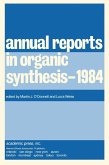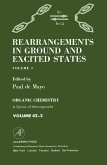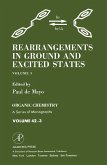Pyrolytic Methods in Organic Chemistry: Application of Flow and Flash Vacuum Pyrolytic Techniques is concerned with the use of flow pyrolysis and flash vacuum pyrolysis in preparative organic chemistry. Topics covered include pyrolytic generation and reactions of free radicals, arynes, and cyclobutadienes; elimination reactions; rearrangements of carbenes and nitrenes in the gas phase; and fragmentation of cyclic and acyclic structures. Examples of the types of reaction for which flow and flash pyrolytic methods are well suited are provided.
This book is comprised of nine chapters and begins by discussing the place of flow and flash vacuum pyrolytic methods in organic chemistry. The next chapter gives an account of apparatus and experimental methods, while the remaining chapters focus on pyrolytic reactions that are grouped together according to the nature of the overall process, the formal structure of the starting material, and mechanistic type. Reactions that are formally related because they involve elimination of a small fragment molecule X-X or X-Y from a larger molecular framework are examined, along with cleavage of carbocyclic systems. The final chapter presents examples of high-temperature rearrangements, focusing on electrocyclic reactions and cycloadditions involving mainly four or six electrons; reactions that proceed through diradical intermediates; and isomerizations of heterocyclic rings.
This monograph is intended mainly for practicing academic and industrial organic chemists and for advanced and graduate students.
This book is comprised of nine chapters and begins by discussing the place of flow and flash vacuum pyrolytic methods in organic chemistry. The next chapter gives an account of apparatus and experimental methods, while the remaining chapters focus on pyrolytic reactions that are grouped together according to the nature of the overall process, the formal structure of the starting material, and mechanistic type. Reactions that are formally related because they involve elimination of a small fragment molecule X-X or X-Y from a larger molecular framework are examined, along with cleavage of carbocyclic systems. The final chapter presents examples of high-temperature rearrangements, focusing on electrocyclic reactions and cycloadditions involving mainly four or six electrons; reactions that proceed through diradical intermediates; and isomerizations of heterocyclic rings.
This monograph is intended mainly for practicing academic and industrial organic chemists and for advanced and graduate students.
Dieser Download kann aus rechtlichen Gründen nur mit Rechnungsadresse in A, B, BG, CY, CZ, D, DK, EW, E, FIN, F, GR, HR, H, IRL, I, LT, L, LR, M, NL, PL, P, R, S, SLO, SK ausgeliefert werden.









